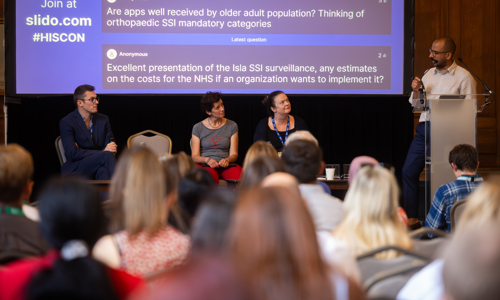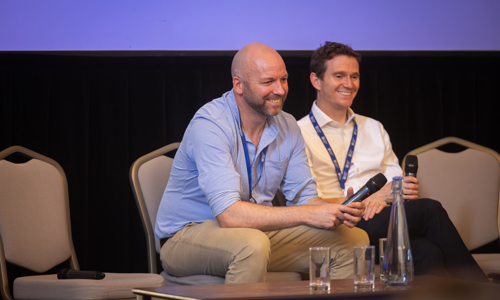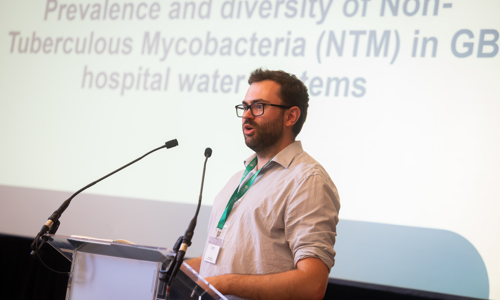
Day two at HISCON25 revealed how infrastructure, AI and genomics are redefining infection prevention and control (IPC).
The morning session began with Jimmy Walker exposing the dangers in hospital water systems – biofilms in taps, drains, and splash zones. He urged attendees to move beyond containment towards proactive design solutions that eliminate waterborne threats. Next, Sara Mumford emphasised the critical role of IPC teams in hospital planning. By being involved from the earliest stages of design and refurbishment, IPC professionals can help prevent infection risks before they materialise. Vicky Gentry then described how novel surveillance systems are being used to evaluate the impact of environmental changes, demonstrating the importance of data-driven decision-making in IPC strategy.

The AI-themed sessions illustrated how predictive technology is helping hospitals get ahead of infection. Timothy Rawson showed how machine learning models can predict which patients are most likely to acquire infections upon admission. Following this, Melissa Rochon presented on the use of AI-enhanced wound monitoring to detect surgical site infections in discharged patients, an innovation that may reduce readmissions through earlier intervention.
Concluding the AI session, Silvana Gastaldi offered insights from her global scoping review project, which synthesises AI-driven IPC applications to identify global trends, implementation barriers, and risk factors while proposing a structured decision support checklist for healthcare integration, identifying both the promise and barriers of AI in IPC.

With a rotation of new posters on display for the second day, delegates had the opportunity to explore new innovations and research findings covering the breadth of IPC.

Post-lunch, the focus turned to genomics. David Eyre highlighted how whole genome sequencing (WGS) can illuminate transmission chains by correlating genetic data with patient and ward movements. Building on this, Alex Sundermann shared how real‑time genomic surveillance is already being deployed in US hospitals to rapidly identify and mitigate outbreaks.
Peter Kinnevey delivered a compelling case study on the persistence of ST80 VREfm clones across 39 months in an Irish hospital, demonstrating how genomics can reveal hidden reservoirs and community-level spread.

During the abstract session, Sam Watkin reported on two critical environmental IPC issues: the prevalence of nontuberculous mycobacteria (NTM) in UK hospital water systems and the susceptibility of Clostridioides difficile RT955 spores to sporicidal disinfectants. Nina J Zhu demonstrated that care home residents face significantly higher UTI rates and worse outcomes than their community peers, signalling a need for targeted IPC in care settings.

The day concluded with a metagenomics session chaired by Helen Dunn, featuring Nathaniel Storey on next-generation sequencing in clinical virology. He discussed the challenges and opportunities in using metagenomic data for pathogen detection and reporting in real-world settings. Meera Chand then explored the application of metagenomics for detecting emerging pathogens. Both stressed that ethical considerations, bioinformatics capacity, and standardised frameworks are essential before widespread adoption.
HISCON25 Day 2 showcased how – from smarter water systems and foresight through AI surveillance and genomic tools – infection prevention is an increasingly a data-driven endeavour. These new approaches demand cross-disciplinary collaboration and institutional commitment to stay ahead of emerging health threats.